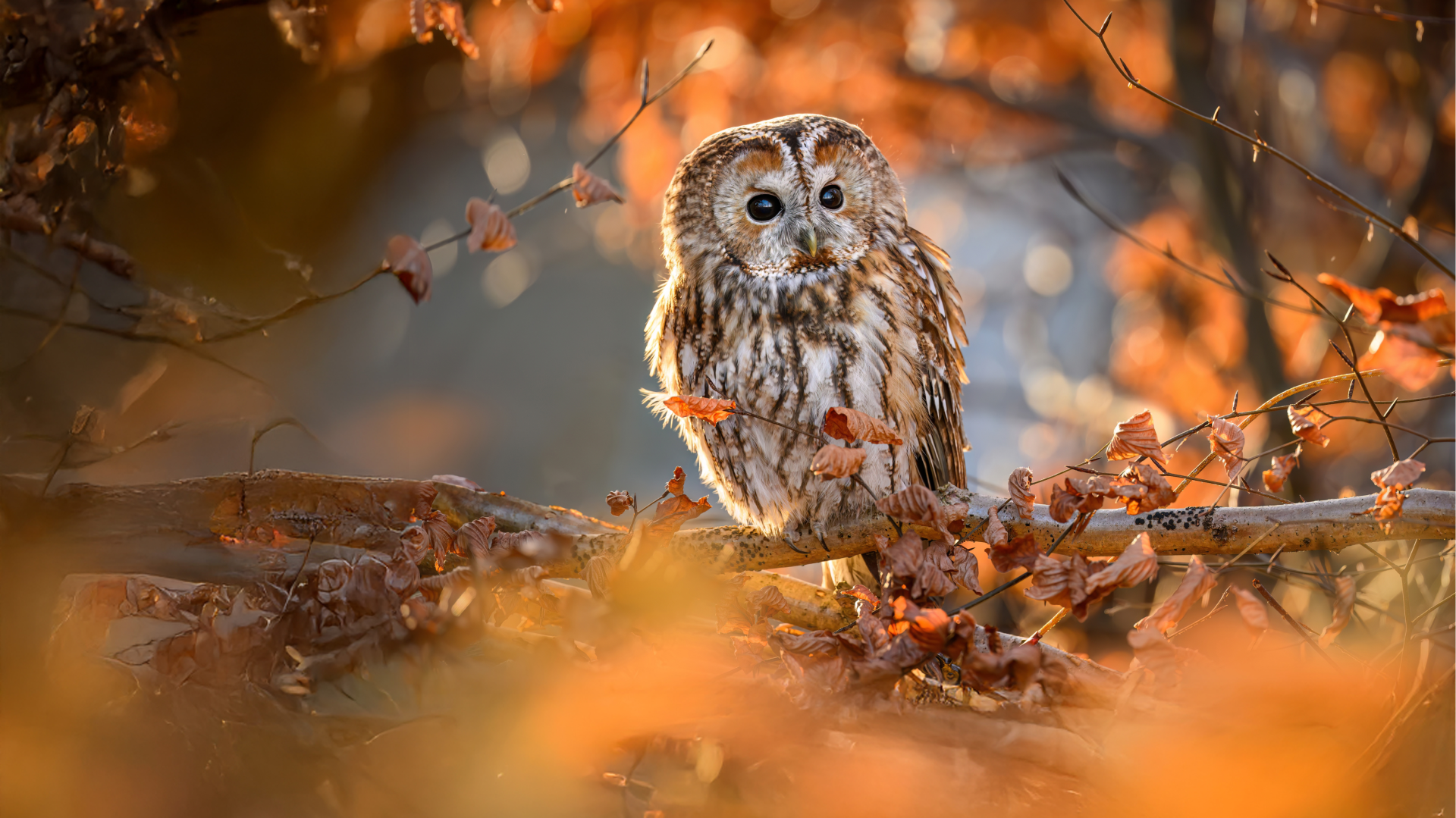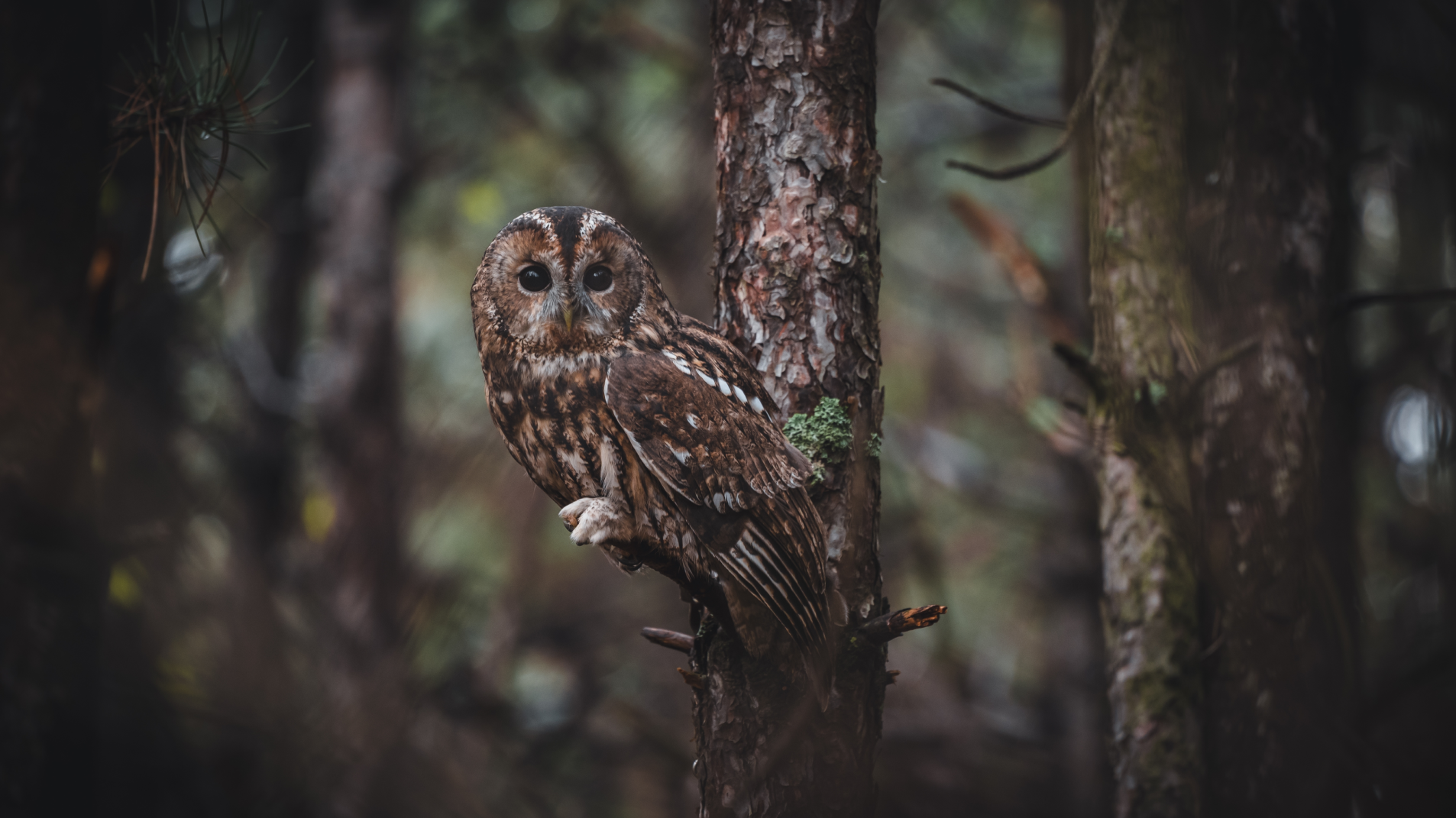The owl is a symbol of wisdom and knowledge, an animal that holds a special place in human imagination. It’s a symbol that inspires us to expand horizons, like bending the spine of a book, and travel to new worlds and ideas. Among the several existing species, the tawny owl (Strix aluco) is one of the most emblematic.
“Houu huu huu” we suddenly hear, undetectable and mysterious through the darkness. This characteristic call is composed of serious and repetitive vocalizations that play an important role in the tawny owl’s communication (Strix aluco), namely to defend its territory and attract partners.
It belongs to the strigid family, is a medium-sized nocturnal bird of prey, and can be spotted in Asia, Europe, and Africa. It’s a sedentary creature, that is, non-migratory, with a regular presence in several locations: cities, gardens, forests and bushland. It feeds on small rodents, birds, reptiles, amphibians and has a special appetite for a beetle menu.






